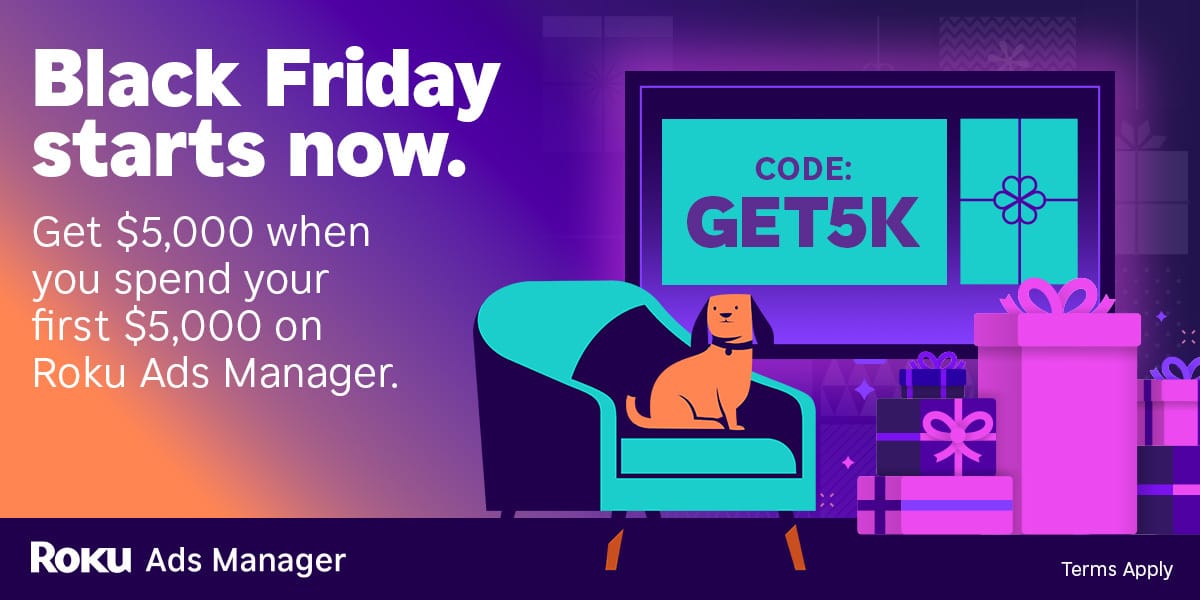- The GTM Guild
- Posts
- Mastering Email Sequences with Mail Merge and CRM Integration
Mastering Email Sequences with Mail Merge and CRM Integration
How to make your outreach smarter, faster, and more personal
If you’ve ever spent hours manually sending follow-up emails, updating spreadsheets, or losing track of which prospect got which message, you already know the pain of disconnected systems.
In 2025, GTM teams can’t afford inefficiencies in outreach. Whether you’re running a cold outreach campaign, nurturing leads, or onboarding customers, email sequences combined with mail merge and CRM integration can help you operate like a growth powerhouse.
Let’s break down the “why,” the “how,” and the common mistakes to avoid.
CTV ads made easy: Black Friday edition
As with any digital ad campaign, the important thing is to reach streaming audiences who will convert. Roku’s self-service Ads Manager stands ready with powerful segmentation and targeting — plus creative upscaling tools that transform existing assets into CTV-ready video ads. Bonus: we’re gifting you $5K in ad credits when you spend your first $5K on Roku Ads Manager. Just sign up and use code GET5K. Terms apply.
Why Email Sequences + Mail Merge + CRM is a Winning Trio
Email Sequences
Email sequences automate follow-ups and nurture messages. Instead of manually sending a second email three days later, you set rules: “If they don’t reply in X days, send Y email.” This keeps your funnel moving without eating your calendar.Mail Merge
Mail merge allows you to personalize mass emails using dynamic fields (e.g., {FirstName}, {CompanyName}, {Industry}). Personalization increases open rates and response rates—especially when the message feels like it was crafted for that one person.CRM Integration
Your CRM (HubSpot, Salesforce, Pipedrive, etc.) is the brain of your GTM machine. Integrating sequences and mail merge with your CRM ensures all activities are logged, contacts are updated in real time, and your team has a shared view of every interaction.
When these three work together, you get scale without losing personalization—and every rep or marketer works from the same source of truth.
Step-by-Step: Building a High-Performance Workflow
Step 1: Centralize Your Data
Clean and segment your contact list inside your CRM first.
Decide on categories: cold leads, warm leads, past customers, event attendees, etc.
Keep fields consistent so your mail merge doesn’t break mid-campaign.
Step 2: Write Your Sequence
Email 1: Short, attention-grabbing intro (personalized).
Email 2: Add value (insights, case study, tool).
Email 3: Social proof or relevant offer.
Email 4: Polite break-up or re-engagement nudge.
Use A/B testing for subject lines, CTAs, and body copy to see what resonates.
Step 3: Layer in Personalization with Mail Merge
Personalize beyond {FirstName}. Reference the recipient’s role, industry trends, or recent company news.
Avoid “over-personalization” that feels robotic. People can spot a fake compliment faster than a typo.
Step 4: Integrate with Your CRM
Sync your sequence tool (e.g., Outreach, Apollo, Lemlist) with your CRM.
Map fields correctly—e.g., “Company Name” in your CRM must match “{{email}}” in your sequence tool.
Ensure replies are logged and trigger changes in lead status.
Step 5: Track, Learn, Iterate
Monitor open, click, and reply rates inside your CRM dashboards.
Double-down on messaging that converts and cut what doesn’t.
Use insights to improve your next sequence.
How 15 Small Brands Achieved Remarkable Marketing Results
Stop believing you need a big budget to make an impact. Our latest collection highlights 15 small brands that transformed limited resources into significant market disruption through innovative thinking.
Case studies revealing ingenious approaches to common marketing challenges
Practical tactics that delivered 900%+ ROI with minimal investment
Strategic frameworks for amplifying your brand without amplifying your budget
These actionable insights can be implemented immediately, regardless of your team or budget size. See how small brands are making big waves in today's market.
Best Practices for Maximum Impact
Start Small, Then Scale
Test on a small segment before sending to thousands. You’ll spot errors (like missing personalization tokens) without damaging your reputation.Keep Deliverability in Mind
Warm up your email domain, avoid spam trigger words, and rotate sending addresses if you’re doing high-volume outreach.Use Behavior-Based Triggers
Instead of a fixed 3-day wait, trigger follow-ups when the recipient opens or clicks an email. This makes your outreach feel timely and intentional.Combine with Other Channels
Email alone is powerful, but pairing it with LinkedIn touches, calls, or retargeting ads creates a surround-sound effect.Document Your Playbook
Keep a shared doc of proven sequences, templates, and best practices so new team members can ramp faster.
Common Pitfalls to Avoid
Over-automation: Sending generic emails that scream “mass blast” will hurt your brand more than silence.
Dirty data: If your CRM has outdated info, your mail merge will embarrass you (“Hi [First Name]…”).
No human review: Always preview your merged emails before launch.
Ignoring GDPR/Privacy Laws: Make sure your outreach complies with local regulations.
Case in Point: From 2% to 18% Reply Rates
One B2B SaaS startup I worked with was sending cold emails directly from Gmail—manually. They had a 2% reply rate.
We moved them to a sequence tool, cleaned their CRM data, layered in mail merge personalization, and set behavior-based triggers. Within three months:
Open rates jumped from 38% to 64%
Reply rates hit 18%
Their SDRs spent 40% less time chasing the wrong leads
That’s the power of combining automation, personalization, and centralized data.
The Bottom Line
If your GTM team still treats email outreach, personalization, and CRM as separate silos, you’re leaving money on the table. The modern play is to build an integrated system that automates what’s repetitive, personalizes what matters, and keeps your data clean and connected.
Master this trio, and you’ll not only scale your email sequences—you’ll scale revenue.
Until next time,
— Team GTM Guild


